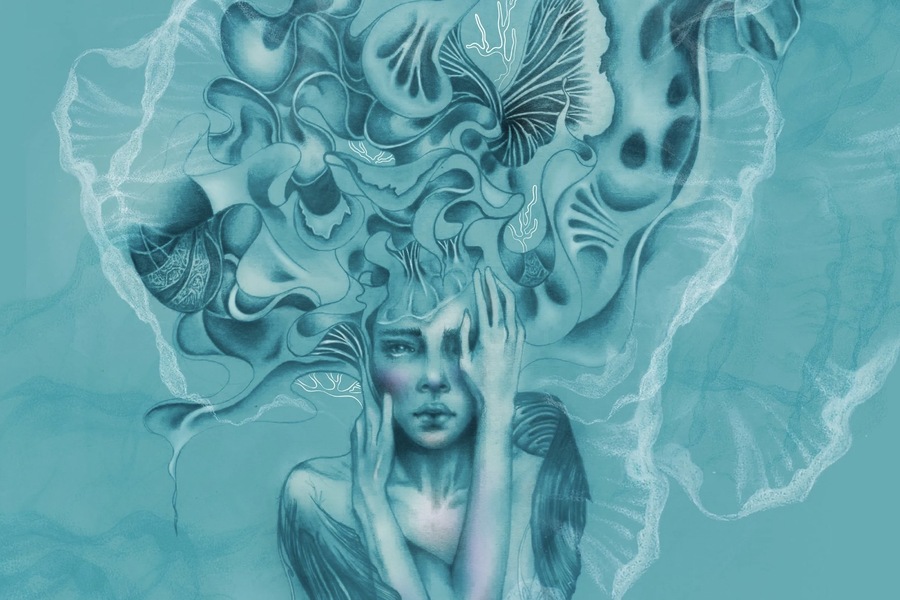Abstract Art: A Journey Beyond Reality
Abstract art, a groundbreaking form of artistic expression, defies the boundaries of traditional representation. Unlike realism, which aims to replicate the world around us, abstract art shifts focus toward the intangible. Through its use of shapes, colors, forms, and textures, it ventures into the realm of imagination, emotions, and conceptual thought. By rejecting the conventional depiction of physical objects, abstract art opens the door for viewers to experience art in a deeply personal and subjective manner, making it one of the most transformative movements in the history of creativity.
What Is Abstract Art?
Abstract art is defined as art that moves away from representing visual reality and focuses instead on exploring relationships between color, shape, and texture. It seeks to express emotions, ideas, or concepts that cannot be conveyed through traditional visual language. It can range from slight deviations of recognizable forms, as seen in Cubism, to complete abstraction devoid of any identifiable subject, such as works by Wassily Kandinsky or Kazimir Malevich.
The fundamental goal of abstract art is to create a sensory or emotional experience rather than a literal representation. By embracing ambiguity, abstract art challenges viewers to engage with it in unique ways, fostering individual interpretation and imaginative exploration.
The Historical Roots of Abstract Art
The Precursors of Abstraction
Abstract art didn’t emerge in isolation; its seeds were planted in earlier art movements that gradually loosened the grip of realism. The late 19th and early 20th centuries witnessed the rise of Impressionism, Post-Impressionism, and Fauvism—movements that began to prioritize color, emotion, and subjective experience over faithful representation.
For example:
-Impressionism emphasized light and atmosphere over precise detail.
-Post-Impressionism, as seen in the works of Vincent van Gogh and Paul Cézanne, explored bold colors and emotional depth.
-Fauvism, championed by Henri Matisse, used vivid, unnatural colors to evoke emotional reactions.
These movements laid the groundwork for artists to break free from depicting reality altogether and instead focus on abstract ideas.
The Birth of Abstract Art
The formal emergence of abstract art occurred in the early 20th century. Several key milestones marked this revolutionary shift:
1909-1913: Wassily Kandinsky produced works that are widely regarded as the first purely abstract paintings, such as Composition VII. Kandinsky believed that art should communicate spiritual truths through color and form.
1915: Kazimir Malevich introduced Suprematism with works like Black Square, which emphasized pure geometric forms and the emotional impact of simplicity.
1920s: Piet Mondrian developed his De Stijl style, characterized by geometric abstraction, primary colors, and horizontal and vertical lines.

Abstract Art Gains Momentum
By the 1930s, abstract art had established itself as a prominent movement. However, its popularity surged in the post-World War II era, particularly with the rise of Abstract Expressionism. This movement, centered in the United States, marked a turning point where abstraction became synonymous with freedom, spontaneity, and individuality.
The Abstract Expressionist Era
Abstract Expressionism dominated the mid-20th century, making the United States, particularly New York City, the new center of the art world. This movement was characterized by its emphasis on emotional intensity and the artist’s creative process. Key features of Abstract Expressionism include:
Gestural Abstraction: As seen in Jackson Pollock’s drip paintings, this approach involved dynamic, spontaneous brushwork or the physical act of dripping and splattering paint.
Color Field Painting: Artists like Mark Rothko and Barnett Newman focused on large areas of solid color to create a meditative experience for the viewer.
Notable Artists
Jackson Pollock: His iconic drip technique revolutionized the way art was created, focusing on the physical engagement of the artist with the canvas.
Mark Rothko: Known for his luminous, large-scale color fields, Rothko aimed to evoke profound emotional responses.
Willem de Kooning: Combining abstraction and figuration, de Kooning’s works were both dynamic and complex, often blending gestural marks with human forms.
The Philosophical Core of Abstract Art
Abstract art is deeply philosophical, often reflecting the artist’s personal beliefs, emotions, and thoughts. Key ideas include:
- Spirituality in Art: Kandinsky believed that art could be a spiritual force, transcending material reality to connect with higher truths.
- Freedom of Expression: Abstract art represents liberation from the constraints of realism, allowing artists to explore their inner worlds.
- Viewer Interpretation: Unlike realistic art, which conveys a clear message or story, abstract art invites viewers to derive their own meanings, making it a deeply personal experience.
Key Movements and Styles Within Abstract Art
Abstract art is not a monolithic movement but a spectrum of styles and approaches. Some of the key movements include:
Cubism
Developed by Pablo Picasso and Georges Braque, Cubism broke objects into geometric shapes, presenting multiple perspectives simultaneously. Though not fully abstract, it played a crucial role in the evolution of abstraction.
Futurism
This Italian movement embraced abstraction to convey motion, energy, and modernity, reflecting the rapid technological advancements of the early 20th century.
Suprematism and Constructivism
Suprematism, founded by Kazimir Malevich, focused on pure geometric forms, while Constructivism applied abstract principles to design and architecture, emphasizing functionality.
Geometric Abstraction
Artists like Piet Mondrian and Josef Albers used precise geometric shapes to explore balance, harmony, and simplicity.
Abstract Expressionism
As discussed earlier, this movement emphasized the emotional and subconscious aspects of abstraction.

Abstract Art in Modern Culture
Influence on Design
Abstract art has profoundly impacted design disciplines, including graphic design, interior design, and architecture. Its principles—such as balance, simplicity, and bold use of color—have inspired everything from minimalist logos to avant-garde fashion.
Pop Culture and Media
Abstract art’s influence can also be seen in music videos, film set designs, and digital art, demonstrating its enduring relevance in contemporary culture.
How to Appreciate Abstract Art
For many, abstract art can seem inaccessible or confusing. However, appreciating abstract art requires an open mind and a willingness to engage emotionally and intellectually. Tips for enjoying abstract art include:
Focus on Feeling: Pay attention to how the colors, shapes, and textures make you feel.
Avoid Overthinking: Abstract art isn’t about finding a hidden message; it’s about experiencing the artwork in your own way.
Learn About the Artist: Understanding the artist’s intentions and background can provide context for their work.
Explaining Abstract Art to Children
A simple way to introduce abstract art to children is by comparing it to imagining shapes in clouds. Just as a cloud might resemble a dragon or a ship, abstract art invites viewers to use their imagination and interpret what they see. Encourage children to express their feelings and ideas about the artwork, fostering creativity and curiosity.
The Enduring Significance of Abstract Art
Abstract art remains one of the most transformative art forms, continually challenging norms and inspiring creativity. By breaking free from the confines of reality, it allows artists and viewers alike to explore uncharted territories of thought, emotion, and imagination. Its power lies in its universality—abstract art speaks a language that transcends culture, time, and place, making it a timeless and ever-evolving force in the art world.
Hockey fan, ramen eater, hiphop head, Mad Men fan and RISD grad. Performing at the nexus of minimalism and purpose to craft experiences both online and in real life. I’m a designer and this is my work.
